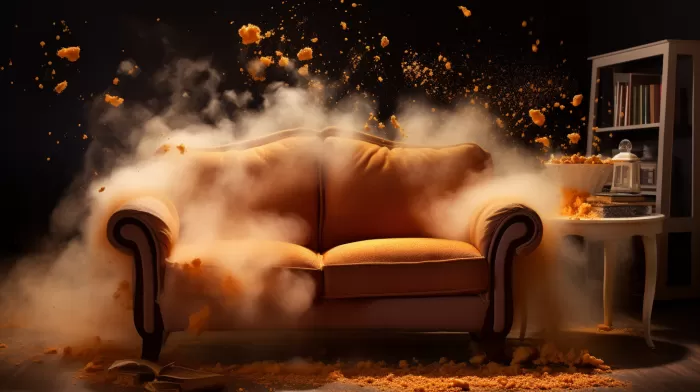When it comes to furniture, you may expect hazardous materials such as heavy metals, volatile organic compounds (VOCs), and formaldehyde to threaten your health. What might be surprising, however, is that the flame retardants added to household furnishings can be equally dangerous. Alarmingly, studies have found high levels of these poisonous chemicals lurking in house dust, posing a significant risk of cancer and hormone disruption.
The Risks of Flame Retardants
Researchers at Newton’s Silent Spring Institute tested for 49 flame-retardant chemicals in household dust, and detected 44 of them. These dangerous compounds are found in items like furniture, textiles, and electronics. Notably, the most dangerous were chlorinated organophosphate flame retardants. The study discovered chemicals like TCEP and TDCIPP, which are listed as carcinogens under California’s Proposition 65.
Even more concerning, TDBPP (also known as brominated “Tris”) was found in 75% of the tested homes, despite the chemical’s ban from children’s pajamas in 1977. With no federal rules requiring safety testing before use, these dangerous chemicals are endangering people’s health daily.
Exposure and Children’s Health
The study found flame retardants present in everyday dust, implicating the regular exposure of these harmful chemicals for everyone in the household. Dr. Robin Dodson from the Silent Spring Institute reports, “These hazardous chemicals are in the air we breathe, the dust we touch, and the couches we sit on. Many flame retardants raise health concerns, including cancer, hormone disruption, and harmful effects on brain development.”
This study is particularly concerning when it comes to vulnerable populations such as children. Since young ones often spend a lot of time on floors, near dust, they are at an increased risk for exposure.
Taking Control and Reducing Exposure
Fortunately, by implementing new habits and practices in your home, you can limit your family’s exposure to toxic flame retardants. Follow these actionable steps to create a safer environment:
1. Dust Regularly
Since flame retardants are found in dust, regular dusting is a must. Be sure to use a vacuum cleaner with a HEPA filter and a damp cloth. A HEPA-filtered vacuum cleaner will help to capture the finest particles of dust, while a damp cloth is ideal for collecting dust without scattering it.
2. Wash Hands Thoroughly
Although it may seem obvious, washing your hands frequently prevents the ingestion of dust and other harmful particles. It can be especially beneficial for reducing children’s exposure to flame retardants.
3. Select Furniture Carefully
Choose furniture that has a natural fire-resistant barrier, such as polyester or wool batting, instead of chemical flame retardants. Additionally, select upholstery made with non-toxic materials or fabrics with alternative treatments like natural dyes or no-VOC alternatives.
4. Opt for Low-VOC Paints
Select low-VOC or no-VOC indoor paints, rather than traditional paints. The fewer VOCs, the less likely your home is to contain hazardous chemicals that can damage your health. Greenguard certified paint is a great option.
5. Address Old Electronics
When it comes to electronic devices, older models are known to contain high levels of flame retardant chemicals. If possible, replace these devices – or at least carefully seal any areas where dust may gather. Keep in mind that TCEP flame retardant chemical is banned from use in new electrical equipment.
6. Watch Out for Foam Cushions
Replace foam cushions that may contain high levels of flame retardants. Many cushions contain chemicals like TCEP or TCPP, which can break down over time and become airborne. Look for replacements manufactured by companies that prioritize creating chemical-free foam products.
7. Test for Dangerous Chemicals
If you’re unsure how much your home is at risk, you can have your household dust tested to identify the presence of flame retardant chemicals. Knowing the levels will help you decide the necessary steps to protect your family’s health.
By taking these simple precautions, you can drastically reduce your exposure to toxic flame retardant chemicals and enjoy a cleaner, safer, and more enjoyable home.



![8 Simple Rules to Refresh Your Body with a Healthy Cleanse [See Pictures]](https://naturalhealthreserve.com/wp-content/uploads/2024/01/8-rules-healthy-cleanse-slideshow-300x168.webp)